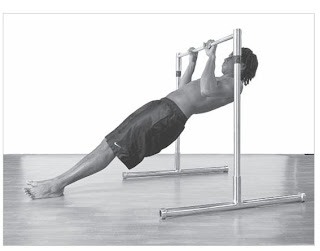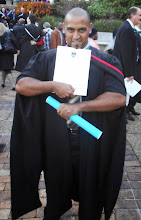BEEFING
THE UPPER FOREARM (BRACHIORADIALIS)
Researched and composed by
Vic Goyaram
 |
Phil Heath
is undeniably the king of brachioradialis
|
Functional anatomy
The brachioradialis is
located at the upper outer region of the forearm. It should not be confused
with the brachialis, the latter being an upper arm muscle located between the biceps and triceps. Perhaps the best
bodybuilder to use as anatomy chart to display the brachioradialis is Mr.
Olympia Phil Heath who is "gifted" with one of the most impressive
pairs in pro bodybuilding today. Of course, those of the two-time Mr. Olympia has a lot to do with genetics but yours can go a long way by using some of the exercises that will be described in this article.
 |
Heath's brachioradialis looks like from another planet
Darrem Charles' biceps are excellent and peaked |
The brachioradialis is an
elbow flexor muscle and is used when using a palms down or overhand (pronated)
grip on pulling and curling exercises. Therefore, exercises that flex the elbow while using an overhand grip
will stimulate the brachioradialis. It is interesting to note that
the brachioradialis has more or less the same muscle fibre composition as the
biceps, meaning a good amount of type II (fast) fibres compared to other
muscles of the forearms which have more type I (slow) fibres. This allowance of
type II fibres in the brachioradialis has important implications for
understanding the function and what repetition range to use to effectively
train this muscle.
 |
Muscular anatomy of the
forearm. Top and bottom pictures show
the inner and outer
forearm respectively
|
Flexing the elbows using an
overhand grip puts the biceps in a mechanically weak position. Just imagine how
stronger you are in an underhand grip barbell row or lat pulldown compared to
when an overhand grip is used. Therefore, elbow flexion movements using an
overhand grip bring the brachioradialis into play to assist the biceps. This may explain why the brachioradialis has a good percentage of type II muscle fibres
just like the biceps.
 |
| Lat pulldowns involve the brachioradialis to some extent (when using the pronated grip) |
Exercises and repetition
ranges
Other exercises
1. Reverse barbell curls
As mentioned above,
exercises that involve elbow flexion with a palms down grip work the
brachioradialis as a secondary muscle. These include overhand grip rowing and
pull-up movements. Good exercises are T-bar rows, rows and chinups/ pullups.
Recommended repetition range for hypertrophy is 6-12. I personally like to follow my back
workouts with a forearm workout comprising of an isolation movement for the
brachialis like reverse barbell curls.
 |
Rowing
movements with an overhand grip indirectly work the brachioradialis.
|
 |
Brachioradialis is also recruited in overhand
grip
chin-ups and
|
1. Reverse barbell curls
Reverse barbell curls can be done standing and seated on a preacher curl
bench. Some trainees find that using an
overhand grip with a straight bar can be uncomfortable on the wrists and therefore
use a cambered (EZ) barbell. Generally a
shoulder width grip is recommended. As a
personal tip for this exercise I recommend keeping the wrists fixed throughout
the movement instead of moving them. I
find that this taxes the brachioradialis muscle even more. Elbows should also be fixed and the weight
should be appropriate in order to avoid recruiting assisting muscles
excessively. The reverse barbell curl is not only a forearm/ brachioradialis exercise. It is also a very good overall arm exercise as it recruits the brachialis and biceps as synergists. Give this exercise a fair shot for adding mass to your arms.
 |
Reverse barbell curls can
be done standing or on a preacher curl
bench with a straight or an EZ bar
|
Use of a hammer grip also
works the brachioradialis and involve a lot of brachialis at the same
time. Hammer curls can be performed
using a preacher bench, using rope or dumbbells. In the latter case, there are
two variations, namely the conventional hammer curls and the cross body or
"pinwheel" variation pictured below. Because this exercise also works
the brachialis I recommend doing it on biceps day but can be included as best
fits your program.
 |
| I prefer using the
cross-body variation for my hammer curl exercise |
3. Zottman Curls
This is an old school
exercise which is hardly ever used nowadays. In this curl you start with a
biceps curl with palms facing up. At the top of the movement rotate your wrists
so that the palms are now facing downwards (pronated). Perform the negative
part of the curl using a pronated grip.
This exercise therefore works both the biceps and the brachioradialis. Elbows
should be kept stationary at all times and not depart from the sides of your
body. The exercise can be done in an alternate manner as well.
 |
Zottmann curls can be done in both an alternate or simultaneous
manner. This is a great movement to beef up the arm |
4. Close grip pronated
grip pullups
This exercise will leave
you in serious pain but can produce dramatic results. Go under a smith machine
bar set at about waist height and using a close and pronated grip (elbows
tucked to the side) bring your body up towards the bar. Hold it there.
Disclaimer:
The Content on this site is intended to be used for educational and entertainment purposes only. It is not intended to be and should not be interpreted as medical advice or a diagnosis of any health or fitness problem, condition or disease; or a recommendation for a specific test, doctor, care provider, procedure, treatment plan, product, or course of action. BODYBUILDING MAURITIUS is not a medical or healthcare provider and your use of this site does not create a doctor / patient relationship. We disclaim all responsibility for the professional qualifications and licensing of, and services provided by, any physician or other health providers posting on or otherwise referred to on this Site and/or any Third Party Site. Never disregard the medical advice of your physician or health professional, or delay in seeking such advice, because of something you read on this Site. We offer this Site AS IS and without any warranties. Correspondence: vicgoyaram@gmail.com
________________________________________________________________________________


















0 comments:
Post a Comment